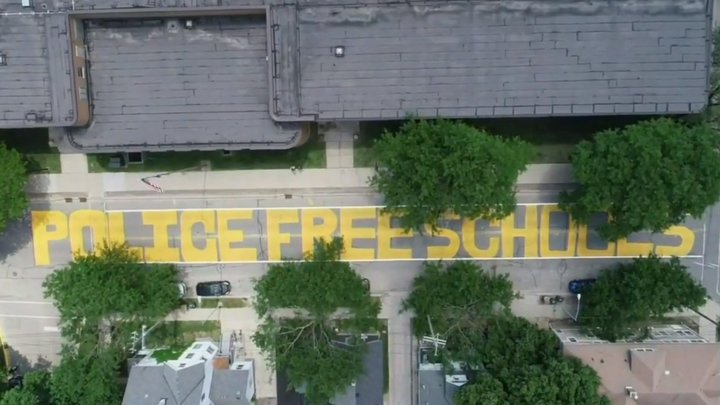A National Movement for Safe Schools
A national movement to reimagine school safety and school discipline has been underway for years. Recently, nationwide protests against the police murders of George Floyd and Breonna Taylor pushed school boards across the country to end their contracts with local police departments and give students the resources they need to flourish. These local politicians are saying loud and clear that Black lives must matter at school.
Just this summer, school boards in Milwaukee, Madison, the Twin Cities, Seattle, Denver, San Francisco, West Contra Costa, and Oakland have all ended the contracts or memoranda of understanding that place police officers in their schools. They are rethinking what school safety means. Denver School Board member Tay Anderson led the push in his city, saying “Our schools cannot be ground zero for the school-to-prison pipeline. Our schools cannot be the place where you are greeted with a cop but not with a nurse.” (In Prince George’s County, there are 33 schools without a full-time nurse.) All over the country, people are divesting from harm and investing in the services our kids need.

But what do police-free schools look like, and what do educators build in these schools after taking police away? There are proven successes all over the country, many built explicitly for students that traditional schools would label ‘problems.’ Roxbury, MA K-8 school Orchard Gardens was one of the lowest-ranked schools in the state, with a reputation for violence. Kids weren’t safe and Principal Andrew Bott made the decision to fire his security guards and replace them with art teachers, returning to the school’s founding theme. Students felt safer, violence decreased, and school metrics improved faster than almost any in the state.
For more than a decade, the FREE LA High School in South Central Los Angeles has used restorative justice practices to support students in danger of dropping out of traditional schools and entering the school-to-prison pipeline. In New Orleans, the Net Charter High School combines small class sizes with teachers trained in mediation to support kids dealing with all sorts of trauma: from previous suspensions and expulsions, to homelessness, to incarceration. In Minnesota, a school district serving high-needs students dealt with far more safety incidents than neighboring districts replaced its SROs with Student Safety Coaches trained in de-escalation, mental health and restorative justice. Arrests plummeted and student engagement increased as these new staff sat in on classes, built relationships, and taught students the skills they needed to resolve conflicts. Check out our Resources page to see model school policies on health, trauma, restorative justice, and more.